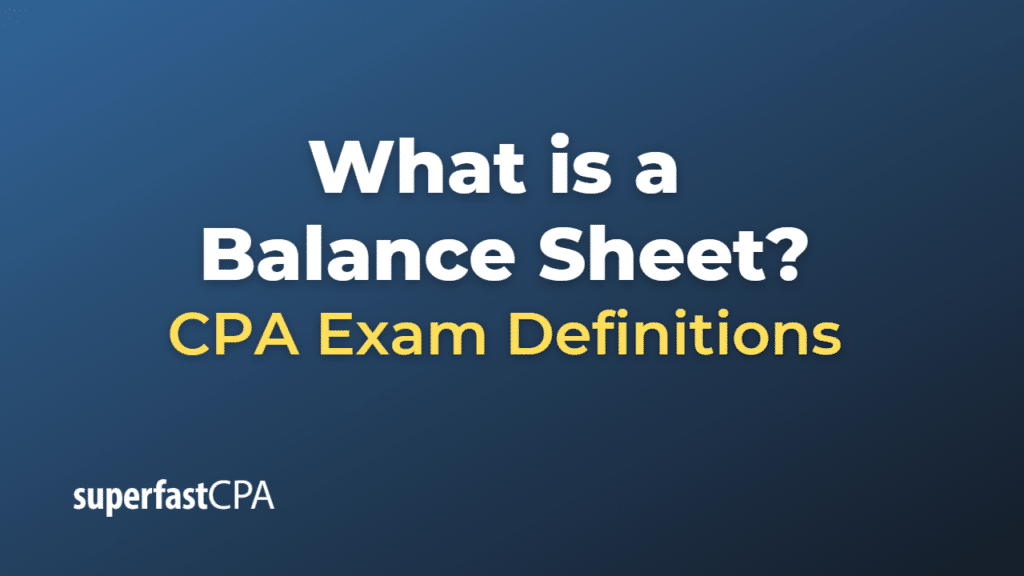Balance Sheet
A balance sheet is one of the primary financial statements used by businesses and individuals to report their financial position at a specific point in time. It provides a snapshot of a company’s assets, liabilities, and shareholders’ equity, helping to illustrate the overall financial health of the business.
The balance sheet is based on the fundamental accounting equation:
Assets = Liabilities + Shareholders’ Equity
- Assets: These are the economic resources a company owns and can use to generate income. Assets are typically categorized as current (short-term) or non-current (long-term) assets. Examples include cash, accounts receivable, inventory, property, plant, and equipment.
- Liabilities: These represent the company’s financial obligations or debts owed to others. Liabilities can also be categorized as current (short-term) or non-current (long-term) liabilities. Examples include accounts payable, short-term loans, long-term loans, and bonds payable.
- Shareholders’ Equity: This represents the residual interest of the company’s owners after all liabilities have been deducted from the assets. Shareholders’ equity is sometimes referred to as net assets or owner’s equity. It includes items such as common stock, preferred stock, retained earnings, and treasury stock.
The balance sheet is an essential tool for assessing a company’s liquidity, solvency, and overall financial strength. It is commonly used by investors, creditors, and other stakeholders to make informed decisions about the business’s financial stability and growth potential.
Example of a Balance Sheet
Here’s an example of a simplified balance sheet for a fictional company called “ABC Corporation” as of December 31, 2022:
ABC Corporation
Balance Sheet
As of December 31, 2022
Assets:
Current Assets:
Cash $50,000
Accounts Receivable $30,000
Inventory $20,000
Total Current Assets $100,000
Non-Current Assets:
Property, Plant, and Equipment $150,000
Less: Accumulated Depreciation $20,000
Net Property, Plant, and Equipment $130,000
Total Assets $230,000
Liabilities:
Current Liabilities:
Accounts Payable $25,000
Short-term Loan $10,000
Total Current Liabilities $35,000
Non-Current Liabilities:
Long-term Loan $70,000
Total Liabilities $105,000
Shareholders’ Equity:
Common Stock $50,000
Retained Earnings $75,000
Total Shareholders’ Equity $125,000
Total Liabilities and Shareholders’ Equity: $230,000
In this example, the balance sheet shows that ABC Corporation has total assets of $230,000, consisting of current assets ($100,000) and non-current assets ($130,000). The company has total liabilities of $105,000, which includes current liabilities ($35,000) and non-current liabilities ($70,000). The shareholders’ equity section shows a total of $125,000, consisting of common stock ($50,000) and retained earnings ($75,000). The total liabilities and shareholders’ equity match the total assets, confirming that the balance sheet is balanced.













